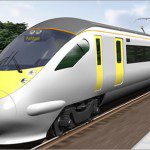New life was breathed into Florida’s high-speed rail project just moments ago, thanks in part to U.S. Sen. Bill Nelson and a handful of other officials who’ve worked to save the project over the past several weeks.
 Federal Transportation Secretary Ray LaHood informed Nelson on Friday that he’s formally reopening the application process for some $2.4 billion in rail money rejected multiple times by Gov. Rick Scott. In so doing, LaHood cleared a path for a transit group in Florida – not the state government – to go after the money, Nelson said.
Federal Transportation Secretary Ray LaHood informed Nelson on Friday that he’s formally reopening the application process for some $2.4 billion in rail money rejected multiple times by Gov. Rick Scott. In so doing, LaHood cleared a path for a transit group in Florida – not the state government – to go after the money, Nelson said.
It’s possible for a new regional transit authority comprised of officials from cities along the future rail route – Tampa, Orlando, Lakeland and Miami – to compete against other states without Scott’s support. But the rail authority would have to do so in conjunction with Amtrak or another established transportation authority, Nelson said.
“Florida’s chances are alive, thanks to Secretary LaHood,” Nelson said. “Secretary LaHood said it’s possible for ‘a Florida transit group’ to apply. That means hope is alive for thousands of good-paying jobs and a modernized transportation system.”
Nelson’s comments came shortly after a telephone conversation with LaHood in which the secretary informed him a regional rail authority in Florida could compete openly with other states like New York and California that have been clamoring for Florida’s money since last month. That’s when Gov. Scott first turned it down, calling it “ObamaRail.”
The positive news for rail supporters came minutes before Scott was stalling another rail project in Florida, called SunRail. The governor late Friday froze contracts for a 61-mile commuter train that was to link Orlando with Osceola, Seminole and Volusia counties. SunRail was projected to create 4,200 jobs.
Florida first applied for federal funding for the so-called bullet train two years ago, for the first leg from Tampa to Orlando. The state was awarded $1.25 billion based on its grant application. Then, after governors in Wisconsin and Ohio turned down rail money, Florida’s system received an added boost and the state was offered a total of $2.4 billion.
Two weeks ago, Scott rejected all the money, saying he believed the train wouldn’t have enough riders and, thus, would pose a risk to taxpayers by losing money. After a week extension from LaHood, a bipartisan effort by Florida’s congressional delegation and officials from cities along the rail route came up with a plan to address all of Scott’s concerns. A new regional rail authority would serve as a sub-grantee of the state, and contract out to private companies that would assume any financial risk. There would be no risk to taxpayers.
Still, Scott said no.
Then last week, Nelson tossed what he termed a “Hail Mary” pass – even as the federal government prepared to give Florida’s $2.4 billion and associated 24,000 jobs to someone else. Taking one last shot at saving the project, Nelson and LaHood discussed whether the grant process could be reopened and whether the money could be awarded directly to a local entity such as the new regional rail coalition in Florida, including the cities of Tampa, Orlando, Lakeland and Miami.
LaHood promised an answer by the end of this week.
A just-released study on Wednesday, found the Tampa to Orlando line would in fact make money. The study, conducted by independent contractors for the Florida Department of Transportation, determined that in its first year the line would have a $10.2 million operating surplus. After ten years, high-speed rail would have a $28.6 million operating surplus.


